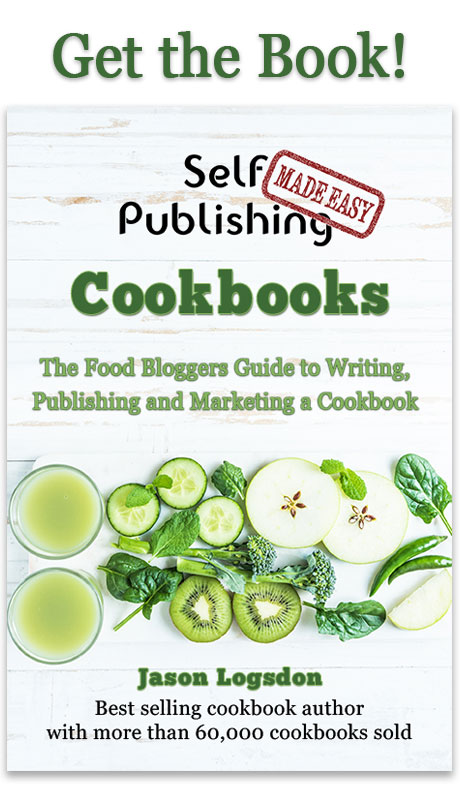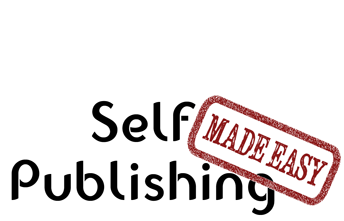Existing Users Sign In

Publishing Master Course Outline
- Self Publishing Master Course Introduction
- Before You Get Started
- Overview of the Publishing Process
- Determining Your Cookbook Goals
- Determine Type of Cookbook
- Consider a Sample Book
- Determine Book Subject
- What Makes a Good Cookbook Subject
- Brainstorming Cookbook Subjects
- Determine the Competition In a Cookbook Subject
- Finding Complementary and Competitive Products
- How to Generate a List of Keyword for Your Cookbook Subject
- Competitive Breakdown of an Amazon Sales Category
- Finally Choosing Your Cookbook Subject
- Research Cookbook Subject
- Choosing Your Avatars
- Researching the Cookbook Subject
- Researching Material for Your Cookbook
- Outlining and Notetaking Tools
- Write Cookbook and Recipes
- Keys to a Well Written Book
- Components to a Recipe
- Recipe Layouts
- Recipe Attribution
- Book Writing Tools
- How to Back Up Your Cookbook Files
- Photograph and Test Recipes
- How to Test Cookbook Recipes
- Food Photography Tips
- Proofread and Edit Cookbook
- Types of Cookbook Editing
- Tips for Self Editing Your Cookbook
- Finding Outside Editing Help
- Proofreading and Editing Resources
- Publishing Formats
- Types of Cookbook Publishing Formats
- Choosing a Self Publishing Printer
- Comparison of Print on Demand Cookbook Printers
- CreateSpace Cookbook Publishing Review
- IngramSpark Cookbook Publishing Review
- Ebook Publishers and Distributors
- Design Cookbook
- Cookbook Design and Formatting Guidelines
- Choosing A Great Cookbook Title
- How to Design a Cookbook Cover
- What Fonts to Use in Your Cookbook
- Cookbook Front Matter
- Cookbook Back Matter
- In-Book Marketing
- How to Design an eBook
- How to Create an ePub File
- Previewing and Testing eBooks
- Finding Outside Design Help
- Publish Cookbook
- How to Price Your Cookbook
- How to Write a Selling Book Description
- Determining Your Amazon Categories
- Choosing Publishing Keywords
- How to Publish on Amazon With CreateSpace
- How to Publish an eBook
- How to Publish On the Kindle
- How to Publish on the Nook
- How to Publish on iTunes
- How to Publish Your Book Through Smashwords
- How to Create and Sell a PDF on Your Blog
- Wholesaling Cookbook
- Methods of Cookbook Wholesaling
- Where to Wholesale Your Cookbook
- Developing a Wholesaling Line Sheet
- Promote Cookbook
- How to Launch Your Cookbook Successfully
- Getting Amazon Reviews
- Newsletter Promotions
- Free Content and Previews on Your Blog
- How to Get Blogs to Write About Your Cookbook
- General Articles
- All About ISBN Numbers
- How Do Cookbook Royalties Work?
- Financing Your Self Published Cookbook
- What is the Amazon Sales Rank?
- Cookbook Writing Resources
- Understanding Book Margins
- PDF Self Publishing FAQs
- How to Poll Your Blog Readers
- What is DRM
- Great Books to Learn About Food and Recipe Writing
- KDP Select - What Is It and Is It Worth it?
- Cookbook Design Programs
- Amazon Top Cookbook Reviewers
- Should You Publish Your ebook Directly or Use a Distributor
- Case Studies
- Sales Channel Revenue Breakdown with Modernist Cooking Made Easy
- Cookbook Writing and Marketing Templates
- Recipe Testing Worksheet Templates
- Review Requests Templates
- Cookbook Newsletter Promotion Templates
- Cookbook Manuscript Templates
Existing users please sign in to continue reading this article.
Welcome to Self Publishing Made Easy!
Publishing a Cookbook can be
Challenging
We will make the process clear and easy, allowing you to focus on creating a remarkable cookbook without any distractions.
Easily Navigate The Publishing Process
Benefit From a Community of Other Self Publishers
Maximize Your Distribution and Profit
We are the leading cookbook self publishing member site on the internet and are here to help you navigate the sometimes tricky path of self publishing. We provide step by step guidance to publishing your own cookbook as well as access to our active and helpful community of self publishers.
Or Get More Information about Self Publishing Made Easy
Disclosure : Some of the links in this post are affiliate links so if you click on the link and purchase the item, I will receive a commission.
Keys to a Well Written Book
Click here to get great self publishing content via emailHaving strong writing is one of the most important factors in creating a successful cookbook. A poorly written book, or one filled with errors will regularly garner negative reviews, leading to fewer and fewer sales. There are some broad areas you can focus on to ensure your writing is up to the task.
Writing Style
Having a strong and distinctive writing style is a key component to a successfully written cookbook. Unless your book is strictly a book of recipes, the style you use in your introduction sections and your recipe headnotes will help set the tone of your book. This is where your personality can shine through.
Easy to Follow Recipes
The most important job a cookbook has is to help people actually cook food. Recipes that are easy to follow and consistently turn out great food is the key to any well-written cookbook. Accurately showing the list of ingredients, clearly stated directions, and notes on successful execution are all critical to good recipes.
As a food blogger you probably already have a recipe style you prefer to use but if you want more information we look at components of a recipe in more detail.
Keep Your Avatars in Mind
Make sure when writing your introductions and recipes you keep your avatars in mind. Different types of people need more information and directions than others. Always writing for your audience will prevent you from providing too much, or too little, information.
Well Organized
Having a well organized and easy to scan cookbook is also very important. Many people will be using your cookbook while they have a pot on the stove, food in the oven, and are rushed for time. Making sure the information they need is right at their finger tips is critical to ensuring they will think highly of your book.
Well Edited
Ensuring that your cookbook is well edited is also a major factor in creating a professional book. This is covered in much more detail in the Proofread and Edit Cookbook section and is one of the biggest failings of many self published books.
Recommended Books and Resources
We highly recommend The Recipe Writer's Handbook and Will Write for Food for a much more detailed look at recipe and food writing in general.
Here are also a few books we recommend to help you develop your writing style:
The Sense of Style: The Thinking Person's Guide to Writing in the 21st Century

The Sense of Style is an engaging, to the point book on the modern art of writing well by New York Times bestselling author Steven Pinker. He applies insights from the sciences of language and mind to the challenge of crafting clear, coherent, and stylish prose. Pinker shows how writing depends on imagination, coherence, grammatical competence, and empathy. He replaces usage dogma with reason which allows writers and editors to accomplish the intent of the guidelines in other ways, rather than blindly follow a rule for a rule's sake.
On Writing Well, 30th Anniversary Edition: The Classic Guide to Writing Nonfiction
On Writing Well: The Classic Guide to Writing Nonfiction by William Zinsser offers you fundamental principles as well as the insights of a distinguished writer, editor and teacher. This book is well known for its sound advice, its clarity and its style. It is a book that is applicable for a wide variety of disciplines, for anybody who wants to learn how to write or who needs to do some writing to get through the day. With more than a million copies sold, this volume has stood the test of time and remains a valuable resource for writers and would-be writers.
The Book on Writing: The Ultimate Guide to Writing Well

Paula LaRocque's The Book on Writing: The Ultimate Guide to Writing Well contains 25 chapters divided into three sections beginning with easy-to-apply guidelines to good writing, from the importance of clarity to the value of a conversational tone. Section 2 addresses how to tell a story, from building suspense, to effective description, to the uses of metaphor and literary devices. The final section deals with common problems in grammar, usage, punctuation, and style. Paula LaRocque is a celebrated writing and a master writer herself with a long and distinguished career in both teaching and practicing the art of writing.
Style: Lessons in Clarity and Grace (11th Edition)
Style: Lessons in Clarity and Grace by Joseph M. Williams & Joseph Bizup is a self-teaching book that is widely used in university composition classes throughout the United States. This classic expose explains the reasons of what drives writing excellence and offers practical advice in cultivating a quality style. These ten chapters of Style focus on clarity, emphasis, organization, conciseness, elegance, and usage. The tips are practical and the descriptive passages come from a broad range of contemporary disciplines.
The Elements of Style

The Elements of Style by William Strunk is a dogmatic writing style guide covering rules of usage, principles of composition, form", and lists of commonly misused and misspelled words. The biggest drawback often noted about The Elements of Style is its lack of more in-depth explanations of style elements. Although a little staid, this book is one of the most influential books written on formal style over the years.


